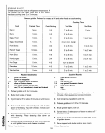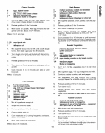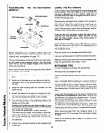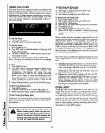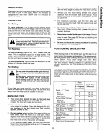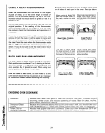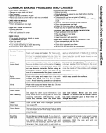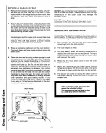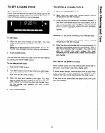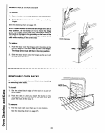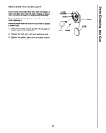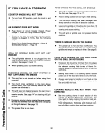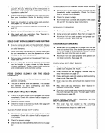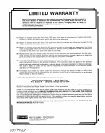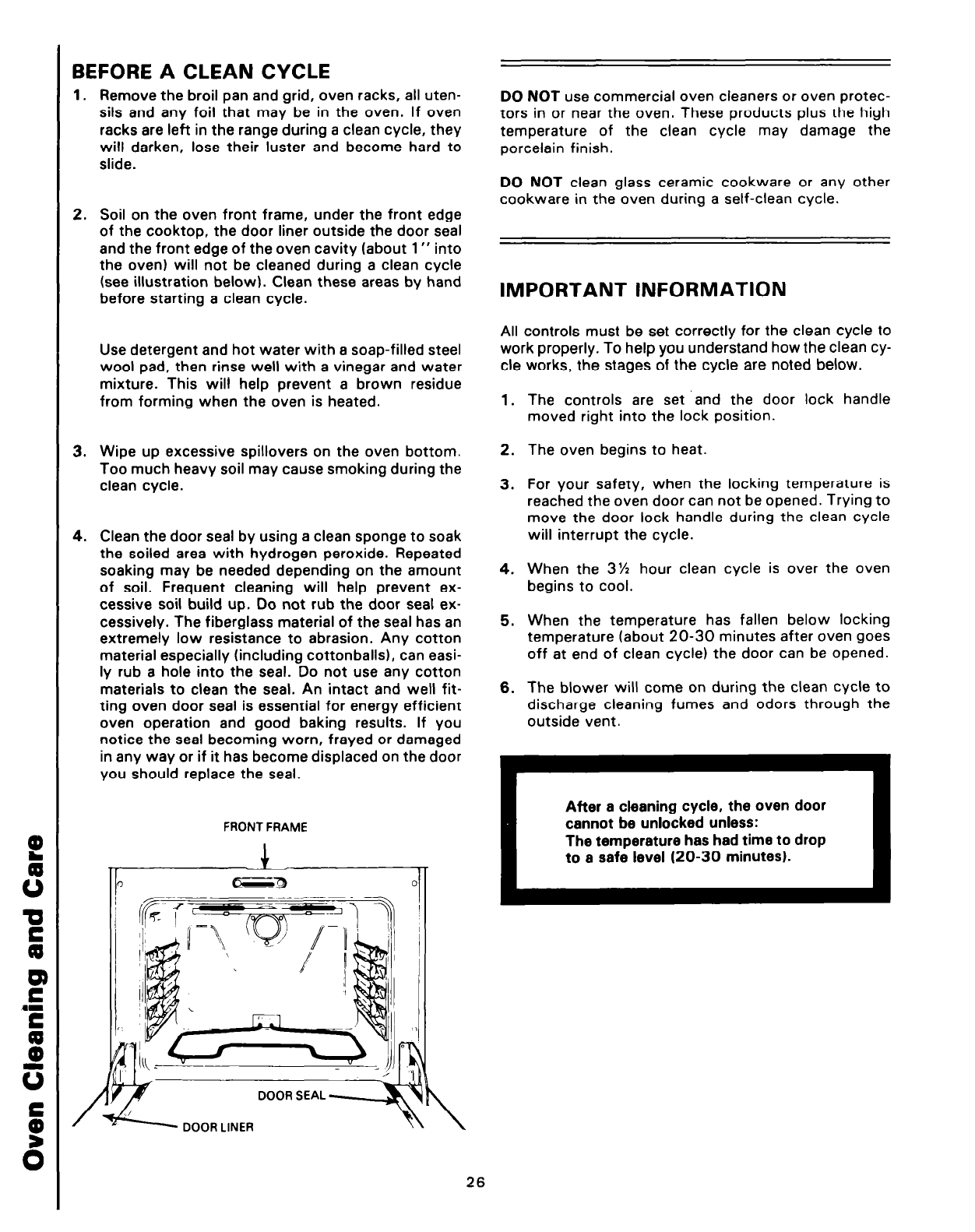
BEFORE A CLEAN CYCLE
1.
2.
3.
4.
Remove the broil pan and grid, oven racks, all uten-
sils and any foil that may be in the oven. If oven
racks are left in the range during a clean cycle, they
will darken, lose their luster and become hard to
slide.
Soil on the oven front frame, under the front edge
of the cooktop, the door liner outside the door seal
and the front edge of the oven cavity (about 1” into
the oven) will not be cleaned during a clean cycle
(see illustration below). Clean these areas by hand
before starting a clean cycle.
Use detergent and hot water with a soap-filled steel
wool pad, then rinse well with a vinegar and water
mixture. This will help prevent a brown residue
from forming when the oven is heated.
Wipe up excessive spillovers on the oven bottom.
Too much heavy soil may cause smoking during the
clean cycle.
Clean the door seal by using a clean sponge to soak
the soiled area with hydrogen peroxide. Repeated
soaking may be needed depending on the amount
of soil. Frequent cleaning will help prevent ex-
cessive soil build up. Do not rub the door seal ex-
cessively. The fiberglass material of the seal has an
extremely low resistance to abrasion. Any cotton
material especially (including cottonballs), can easi-
ly rub a hole into the seal. Do not use any cotton
materials to clean the seal. An intact and well fit-
ting oven door seal is essential for energy efficient
oven operation and good baking results. If you
notice the seal becoming worn, frayed or damaged
in any way or if it has become displaced on the door
you should replace the seal.
FRONT FRAME
26
DO NOT use commercial oven cleaners or oven protec-
tors in or near the oven. These products plus the high
temperature of the clean cycle may damage the
porcelain finish.
DO NOT clean glass ceramic cookware or any other
cookware in the oven during a self-clean cycle.
IMPORTANT INFORMATION
All controls must be set correctly for the clean cycle to
work properly. To help you understand how the clean cy-
cle works, the stages of the cycle are noted below.
1. The controls are set ‘and the door lock handle
moved right into the lock position.
2. The oven begins to heat.
3. For your safety, when the locking temperature is
reached the oven door can not be opened. Trying to
move the door lock handle during the clean cycle
will interrupt the cycle.
4. When the 3% hour clean cycle is over the oven
begins to cool.
5. When the temperature has fallen below locking
temperature (about 20-30 minutes after oven goes
off at end of clean cycle) the door can be opened.
6. The blower will come on during the clean cycle to
discharge cleaning fumes and odors through the
outside vent.
After a cleaning cycle, the oven door
cannot be unlocked unless:
The temperature has had time to drop
to a safe level (20-30 minutes).



